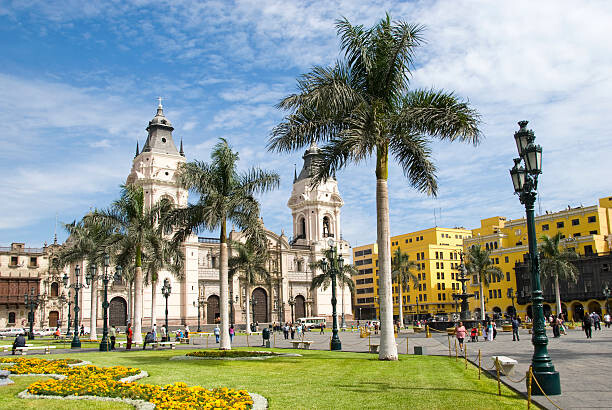
With a long and at times turbulent history shaped by its unique geography, Chile boasts a rich biodiversity and a diverse cultural landscape, making it a fantastic destination for history enthusiasts. There's a wealth of history to unravel when visiting Chile, and here are some of the top places to begin your historical journey:
1. Plaza de Armas, Santiago
The historical heart of Chile's capital, Santiago's Plaza de Armas has served as a social and political center for centuries. Like other "Plazas de Armas" in South America, it was designed according to the principles followed by the Spanish conquistadors and was initially a military and administrative hub, used to store weapons and resupply troops. Before the arrival of the Spanish, the Inca people had settlements here, utilizing it as a center for trade and administration. Surrounding the square are significant buildings such as the Central Post Office, the Metropolitan Cathedral of Santiago, and the National Historical Museum, housed in the former Royal Court. During the colonial era, markets and shops sprang up, contributing to the city's economic development, and today, the Plaza de Armas remains a focal point of public life in Santiago.
2. Museum of Memory and Human Rights (Museo de la Memoria y los Derechos Humanos)
For a deeper understanding of Chile's present, a visit to the museum dedicated to perhaps the most painful and turbulent period in the nation's history – the dictatorship of Augusto Pinochet – is essential. The MMHR houses powerful and often shocking exhibits, including photographs, documents, and testimonies documenting the human rights abuses committed during the 20-year military regime. Instruments of torture are also on display, which may not be suitable for young children or those with sensitive dispositions. Admission is free. Pinochet's brutal rule has had a long and lasting impact on Chilean culture. Learning about this recent history can provide a greater understanding of the challenges facing modern Chile.
3. La Moneda Palace (Palacio de La Moneda)
More than just the presidential residence, La Moneda Palace in Santiago stands as one of Chile's most poignant historical symbols. It was here, on September 11, 1973, that a military coup delivered its final blow to the freely elected socialist president, Salvador Allende. Amidst the assault on the palace by Pinochet's forces, President Allende delivered his farewell address to the Chilean people via national radio. He then took up an AK-47 rifle, vowing to defend his nation against the military coup. Allende died that day from two self-inflicted gunshot wounds, though rumors that Pinochet's forces murdered him persisted for decades. In 2011, his body was exhumed, and the cause of death was confirmed as suicide. While La Moneda cannot be freely toured, you can join a guided tour to explore its grand halls, or admire this monumental historical symbol from its exterior gardens and plan your visit to coincide with the changing of the guard ceremony.
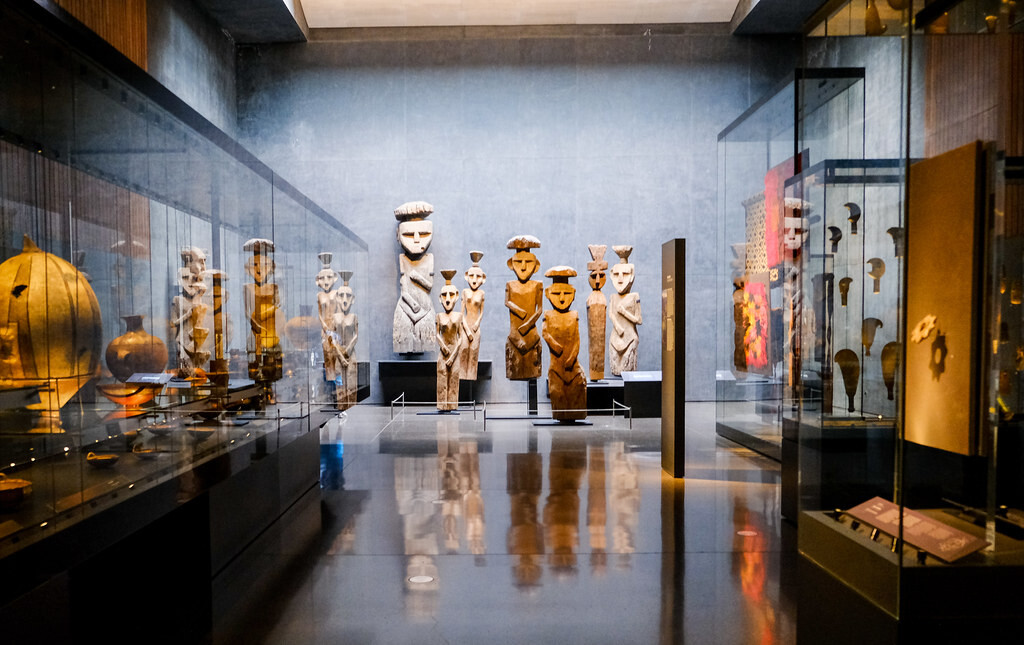
4. Chilean Museum of Pre-Columbian Art (Museo Chileno de Arte Precolombino)
Housed in the former Royal Customs House, the Chilean Museum of Pre-Columbian Art boasts an impressive collection of artifacts from the ancient cultures of the Americas. It is a precious gem among indigenous art museums worldwide and one of Latin America's must-see museums. Its well-organized exhibits span nearly 10,000 years of ancient art from over 100 diverse civilizations, including sculptures, textiles, carvings, ceramics, and stonework. A top destination in Chile for history and art lovers alike, it's an essential visit for anyone who believes that the Aztec, Mayan, and Incan civilizations represent the entirety of Latin America's indigenous cultures.
5. Bellas Artes Museum (Museum of Fine Arts)
The National Museum of Fine Arts in Santiago stands as the oldest art museum in South America and a magnificent example of Neoclassical/Baroque architecture. It features a grand dome composed of 2,400 panes of glass that flood the main hall with natural light. While the building itself is impressive, its true allure lies in the exquisite collection of over 5,000 works of art, spanning Chilean art history from the colonial era to the present day.
6. La Chascona (Pablo Neruda's House)
For admirers of Chile's most celebrated Nobel Prize-winning poet, Pablo Neruda, a visit to La Chascona is a must. This literary giant's three houses have been transformed into museums, serving as sanctuaries that offer a glimpse into his life, work, and impact on Chilean culture. La Chascona, located in Santiago's Bellavista neighborhood, is the most accessible of Neruda's homes. Meaning "disheveled hair," La Chascona was built in the 1950s and named after Neruda's pet name for his wife, Matilde Urrutia. The house is beloved for its unique architectural style and eclectic flair, reflecting Neruda's artistic personality.
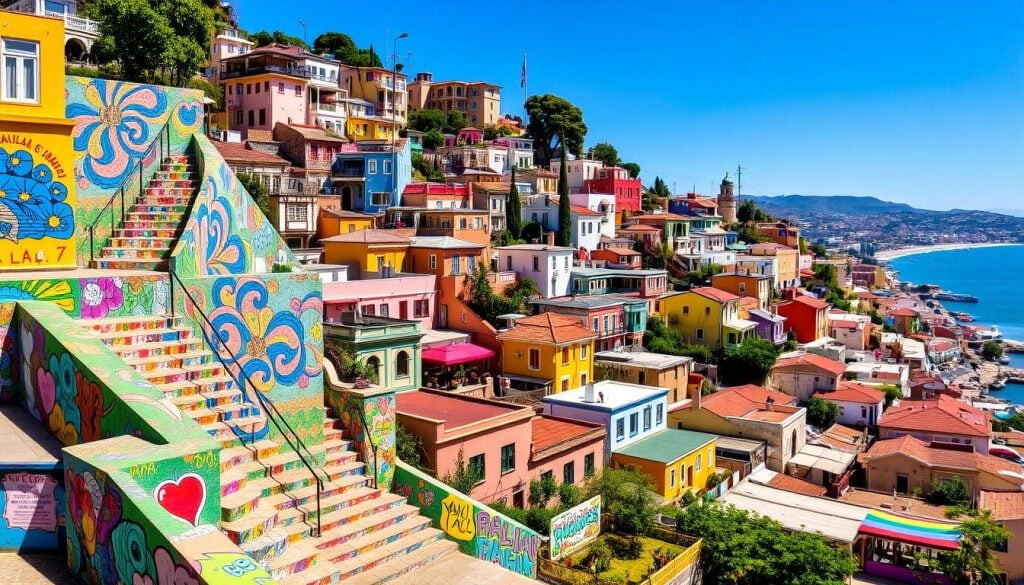
Top Destinations in Northern Chile
7. Valparaiso Historic Core
A beloved weekend escape for Santiaguinos, Valparaiso is a quirky, artistic, and sometimes gritty coastal city celebrated for its vibrant street art, unique topography, and bohemian atmosphere. A historic port city, its central core has been a UNESCO World Heritage Site since 2003. Prior to the arrival of the Spanish, it was a small but thriving settlement of the Changos people. In 1536, Juan de Saavedra founded it as a colonial town, naming it after his hometown in Spain. Thanks to its strategic location on the Pacific coast, Valparaiso grew into a significant trading port over the centuries, eventually becoming Chile's principal maritime hub. The discovery of gold in California and Australia in the mid-1800s further amplified the city's importance as ships carrying migrant workers would call at Valparaiso to refuel and rest. This era of prosperity attracted numerous European immigrants who influenced the city's culture, architecture, and economy, spearheading vital infrastructure projects like railways and the iconic funiculars. However, the opening of the Panama Canal in 1914 rerouted maritime traffic away from Valparaiso, causing its economic boom to wane. Despite this, the coastal city has weathered setbacks, including two other devastating earthquakes, and has re-emerged as a center for Chilean culture, architecture, and the arts.
8. The Atacama Desert
San Pedro de Atacama is one of Chile's most charming towns and the ultimate base for exploring the Atacama Desert's main attractions. Known as the driest non-polar desert in the world, the Atacama is rich in natural history and human history. Surreal landscapes are peppered with ancient petroglyphs and pre-Columbian archaeological sites (like the Pukará de Quitor fortress), ghostly colonial-era mining towns (Humberstone and Santa Laura), and a plethora of stunning natural wonders. The Atacama boasts the highest geyser field in the world (El Tatio) and Licancabur volcano, the most active volcano in Chile. This awe-inspiring desert is also one of the best places in the world for stargazing, with several world-class observatories offering nightly tours. The desert's arid atmosphere and the coastal fog that rolls in after dusk plunge the landscape into remarkable darkness. A star-filled night sky in the Atacama is truly magical.
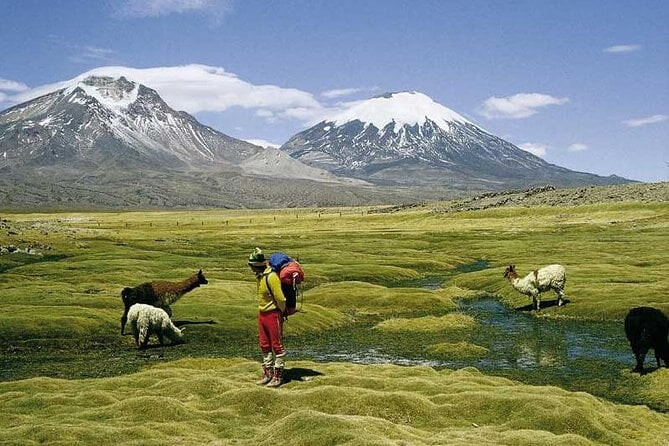
9. Parinacota Town, Lauca National Park
Spanning the high plains of northern Chile, Lauca National Park is an internationally protected biosphere reserve boasting unique biodiversity and historical sites. It's one of the best places to visit in Chile for those who enjoy exploring both natural and historical attractions, and particularly rewarding for birdwatching enthusiasts. History buffs should head to the small town of Parinacota, renowned for its 17th-century church architecture, a beautiful blend of Spanish and indigenous styles. The entire region has been inhabited since pre-Columbian times, with the Aymara people leaving a lasting cultural legacy, notably in the ancient terraced fields and agricultural practices still in use today.
Top Destinations in Southern Chile
10. Chiloé Island
Having developed in relative isolation since pre-Columbian times, Chiloé is a world unto itself. The island is famous for its 16 enchanting wooden churches, a UNESCO World Heritage Site, and its colorful stilt houses known as palafitos. The island's main towns, Castro and Ancud, are utterly charming and it's undoubtedly one of the most unique historical places to visit in Chile. Interestingly, the indigenous peoples of the southern Patagonian region of fjords, lakes, and channels were accomplished mariners and fishermen long before the arrival of Europeans. In Chiloé, the indigenous Chono people navigated using log canoes called dalcas. Replicas of dalcas can be seen at the Museo Etnográfico de Dalcahue. However, to see the only remaining authentic dalca, you'll need to travel to the Museum of World Culture in Gothenburg, Sweden. This is a top destination for those wanting to explore the wilds of southern Patagonia and enjoy a cultural and historical experience as well.
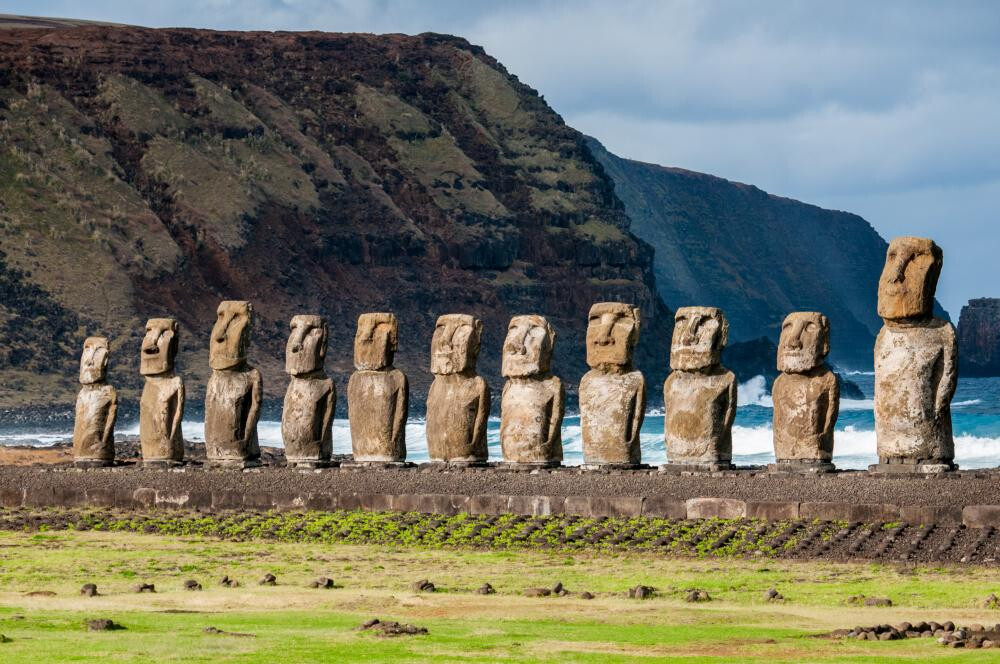
11. Cueva del Milodón Natural Monument (Milodon Cave Natural Monument)
Located just a few miles from Puerto Natales, the Milodon Cave is one of the best places to visit in Chile for a glimpse into the interaction between early humans and their environment. It was here in 1896 that Captain Eberhard discovered ancient cave paintings and the remains of an extinct giant sloth, said to have been twice the size of a man. The cave itself is immense, measuring approximately 30 meters high, 80 meters wide, and 200 meters deep, making it a thrilling experience for visitors. Inside, you'll find a somewhat kitschy 4-meter-tall replica of the milodon sloth, as well as exhibits featuring other fossil finds, including saber-toothed cats and dwarf horses. Evidence of human activity dating back to 6000 BC, found in the site's three caves, is also on display. While a round-trip taxi from Puerto Natales is easily arranged, tours of Torres del Paine National Park often include a visit to these caves.
12. Easter Island (Rapa Nui)
Among the world's many islands, few greet visitors with colossal stone statues. Easter Island, located approximately 3,700 kilometers off the coast of southern Chile, is a unique exception. Perched in a remote corner of the Pacific Ocean where East meets West, this fascinating island is an intriguing blend of Asian influences and South American heritage. History enthusiasts are drawn to the island's rich history, culture, and dramatic landscapes, but above all, to witness the famed moai statues and impressive stone altars. Officially "discovered" on Easter Sunday in 1722 by Dutch explorers, hence its English name, Easter Island was an important destination for Polynesian navigators in search of new lands. Though now a stark landscape, it is believed to have once boasted a highly lush environment. Ancient Polynesian settlers encountered trees believed to be the largest palms in the world, which they used to build homes, tools, and canoes. Over time, the intensive use of these resources led to the palm's extinction, leaving the island largely treeless. By the time Chile annexed the island in 1888, the local indigenous population had already endured significant hardship, including the extinction of important plant species, raiding, famine, and devastating diseases introduced by European colonizers. During your visit, be sure to explore the anthropological museum in Hanga Roa, Rapa Nui's main town, to delve deeper into the enigmatic statues and the ancient culture that created them.
[Copyright (c) Global Economic Times. All Rights Reserved.]






























